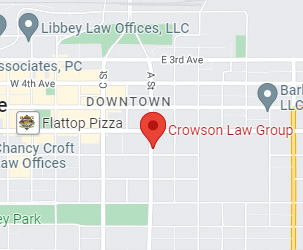What Causes Driver Fatigue?

Driver fatigue is a serious and often underestimated threat on our roadways. It is a hidden danger that significantly increases the risk of car accidents, often with severe consequences.
When a driver experiences fatigue, their reaction times slow, awareness diminishes, and decision-making becomes impaired. This can lead to devastating outcomes, making it crucial to understand the root causes of driver fatigue.
Stress and Emotions
Stress, anxiety, and strong emotions can profoundly affect our concentration and energy levels. When we are mentally and emotionally drained, our ability to focus on the task of driving diminishes. This can put you at increased risk of a car crasht. If you’re involved in a car accident, it’s important to consult with an experienced lawyer for car accident injury.
Here’s how stress and emotions can contribute to driver fatigue:
- Distraction
- Poor decision-making
- Physical tension
If you’re experiencing significant stress or emotional distress, it’s wise to postpone driving if possible, or take extra precautions such as having a trusted co-driver.
Lack of sleep
Lack of sufficient sleep is the most obvious and prevalent cause of driver fatigue. The National Highway Traffic Safety Administration (NHTSA) estimates that drowsy driving causes around 100,000 crashes each year in the United States.
Adults generally need 7-8 hours of quality sleep per night. When we consistently get less than this, a “sleep debt” builds up, leading to chronic fatigue that puts drivers at risk.
Drivers in certain professions, such as commercial truck drivers or those with irregular shifts, are particularly susceptible to sleep deprivation. In Alaska, personal injury laws hold drivers accountable for damages caused by negligence, including those stemming from driving while sleep-deprived.
Time of day
Our bodies operate on a natural sleep-wake cycle known as circadian rhythm. This rhythm makes us most prone to sleepiness at two crucial points in the day: during the nighttime – roughly between midnight and 6 a.m. – and the mid-afternoon dip – around 2 p.m. to 4 p.m.
Driving during these peak fatigue periods, especially when already sleep-deprived, drastically increases the risk of a crash.
Medication
Naturally, place the following keywords – lawyer car accident injury
Many medications, both prescription and over-the-counter, carry warnings about potential drowsiness. Common examples include:
- Antihistamines
- Antidepressants and anti-anxiety medications
- Pain relievers, especially those containing opioids
- Blood pressure medications
Drivers should carefully read the warning labels on any medication and discuss potential side effects with their doctor or pharmacist. Ignoring these warnings could cause a driver unintentionally operating a vehicle while impaired.
Medical conditions
Several underlying medical conditions can contribute significantly to driver fatigue. Some of the most common include:
- Sleep apnea
- Narcolepsy
- Restless Legs Syndrome (RLS)
- Insomnia
If you experience persistent fatigue despite getting enough sleep, consult with a healthcare professional to rule out potential medical causes. Under Alaska law, drivers with known medical conditions that can cause fatigue may have a heightened responsibility to ensure they are not endangering themselves or others on the road.
Long, monotonous drives
Driving for extended periods, especially on monotonous roads like highways, can induce a state of fatigue known as “highway hypnosis.” The repetitive scenery, lack of mental stimulation, and the hum of the vehicle contribute to decreased alertness.
To combat this, it’s essential to take regular breaks during long drives. The Alaska Department of Transportation and Public Facilities recommends stopping every two hours or 100 miles to stretch, walk around, and refresh your focus.
Driver fatigue is a serious safety concern that can have devastating consequences. By understanding the various factors that contribute to fatigue – lack of sleep, time of day, medication, medical conditions, monotonous driving, and stress – we can take proactive steps to protect ourselves and others on the road.
Featured Image Source: https://unsplash.com/photos/person-driving-car-during-daytime-fsShFki0www


